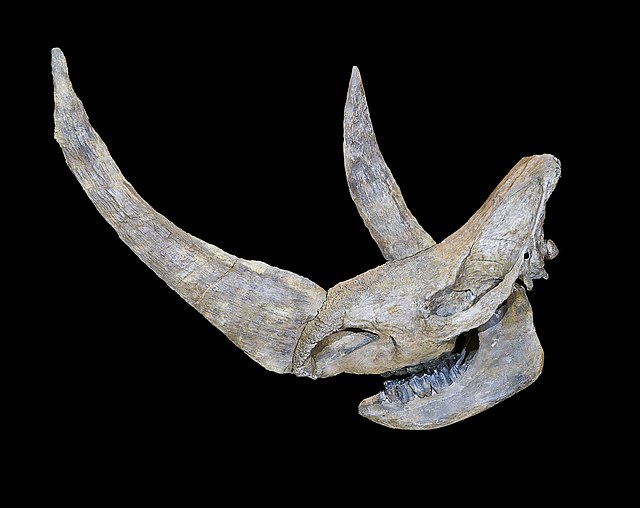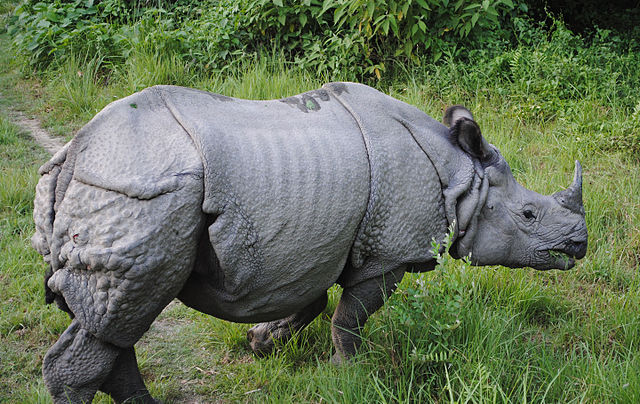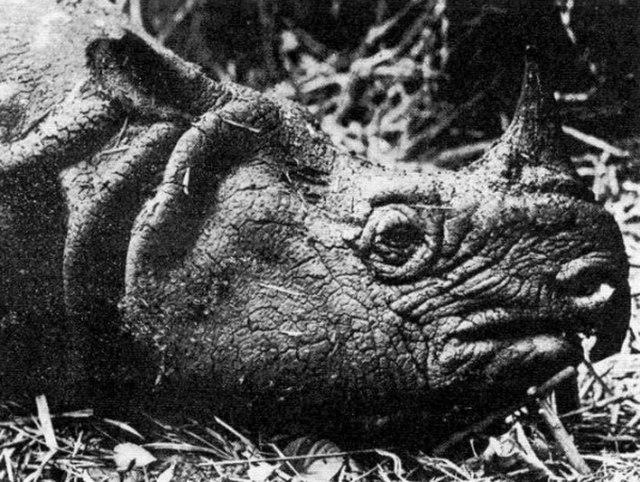The woolly rhinoceros, simply known as woolly rhino, is an extinct species of rhinoceros that inhabited northern Eurasia during the Pleistocene epoch. The woolly rhinoceros was a member of the Pleistocene megafauna. The woolly rhinoceros was covered with long, thick hair that allowed it to survive in the extremely cold, harsh mammoth steppe. It had a massive hump reaching from its shoulder and fed mainly on herbaceous plants that grew in the steppe. Mummified carcasses preserved in permafrost and many bone remains of woolly rhinoceroses have been found. Images of woolly rhinoceroses are found among cave paintings in Europe and Asia. The species range contracted towards Siberia beginning around 17,000 years ago, with the youngest known records being around 14,000 years old in northeast Siberia, coinciding with the Bølling–Allerød warming, which likely disrupted its habitat.
Woolly rhinoceros
Molar tooth showing the cavity the genus was named for
Restoration
Woolly rhinoceros skull
A rhinoceros, commonly abbreviated to rhino, is a member of any of the five extant species of odd-toed ungulates in the family Rhinocerotidae; it can also refer to a member of any of the extinct species of the superfamily Rhinocerotoidea. Two of the extant species are native to Africa, and three to South and Southeast Asia.
The white rhinoceros is actually grey.
The black rhinoceros has a beak shaped lip and is similar in color to the white rhinoceros.
The Indian rhinoceros has a single horn.
Smaller in size than the Indian rhinoceros, the Javan rhinoceros also has a single horn.








